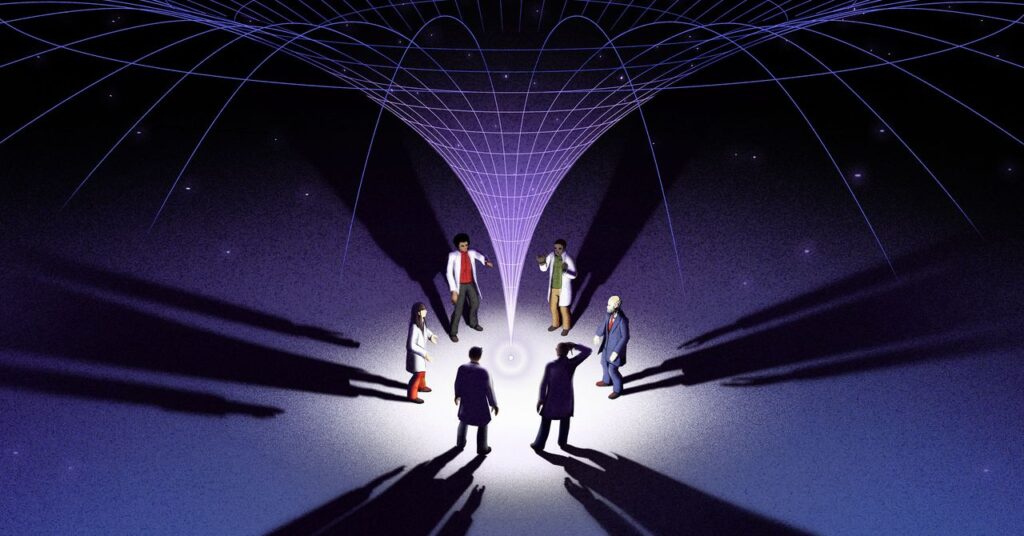
The quest for a fundamental theory of quantum gravity continues to challenge physicists, as they grapple with two enigmatic phenomena: the birth of the universe and the core of black holes. These phenomena, known as singularities, represent points where the intertwined threads of space and time appear to unravel. Singularities are predicted by Albert Einstein’s general theory of relativity, which describes how matter and energy curve the fabric of space-time, creating gravity. However, when matter is densely packed, Einstein’s equations suggest an infinite curvature, resulting in singularities.
Despite these predictions, many physicists, including Hong Liu from the Massachusetts Institute of Technology, view singularities as “mathematical artifacts” rather than physical realities. They are seen as points where general relativity breaks down, indicating the need for a more fundamental theory of gravity—one that integrates quantum physics with general relativity.
The Challenge of Singularities in Quantum Gravity
As researchers strive to develop a unified theory of quantum gravity, singularities remain a formidable obstacle. Roger Penrose, a British mathematical physicist, was awarded the Nobel Prize in Physics for his work in the 1960s, proving that singularities are inevitable in a universe composed solely of space-time. This insight has been expanded upon in recent studies, which suggest that even in universes containing quantum particles, singularities persist.
One significant study demonstrated that singularities occur in universes with quantum particles, even when these particles do not affect the curvature of space-time. Earlier this year, another physicist proved that singularities exist in theoretical universes where quantum particles do influence space-time, resembling our own universe.
“This trilogy of proofs challenges physicists to confront the possibility that singularities may be more than mere mathematical mirages.”
These findings suggest that singularities might be intrinsic to our universe, representing points where space-time becomes so distorted that it loses its recognizable structure. At these points, the passage of time halts, and no object can traverse them. The singularity theorems prompt researchers to delve deeper into the nature of these points and seek a more comprehensive theory that can explain what might transpire if time truly ceases.
Space-Time’s Fatal Flaws
The concept of singularities dates back to 1916 when Karl Schwarzschild discovered a space-time configuration with a singularity, shortly after Einstein introduced general relativity. The peculiar characteristics of the “Schwarzschild solution” took years to decipher. Space-time, in this model, resembles a whirlpool, with increasingly steep walls as one approaches the center, where the curvature becomes infinite. This vortex is inescapable, with a spherical boundary that traps everything, including light.
It took decades for physicists to accept the existence of these seemingly inconceivable objects, eventually termed black holes. The realization that black holes might actually exist marked a significant milestone in understanding the universe’s most extreme conditions.
Implications for the Future of Physics
The ongoing exploration of singularities and the quest for a theory of quantum gravity have profound implications for the future of physics. Understanding these points could unlock new insights into the universe’s origins and the fundamental nature of reality. The pursuit of a unified theory continues to drive physicists to explore the boundaries of current scientific knowledge.
As researchers advance in their efforts to merge general relativity and quantum physics, they aim to develop a theory that not only addresses the existence of singularities but also provides a coherent framework for understanding the universe at its most fundamental level. The journey toward this goal remains one of the most intriguing and challenging endeavors in modern science.
While the path to a unified theory of quantum gravity is fraught with challenges, the potential rewards are immense. A deeper understanding of singularities and their implications could revolutionize our comprehension of the universe and its underlying principles, paving the way for new discoveries and technological advancements.







